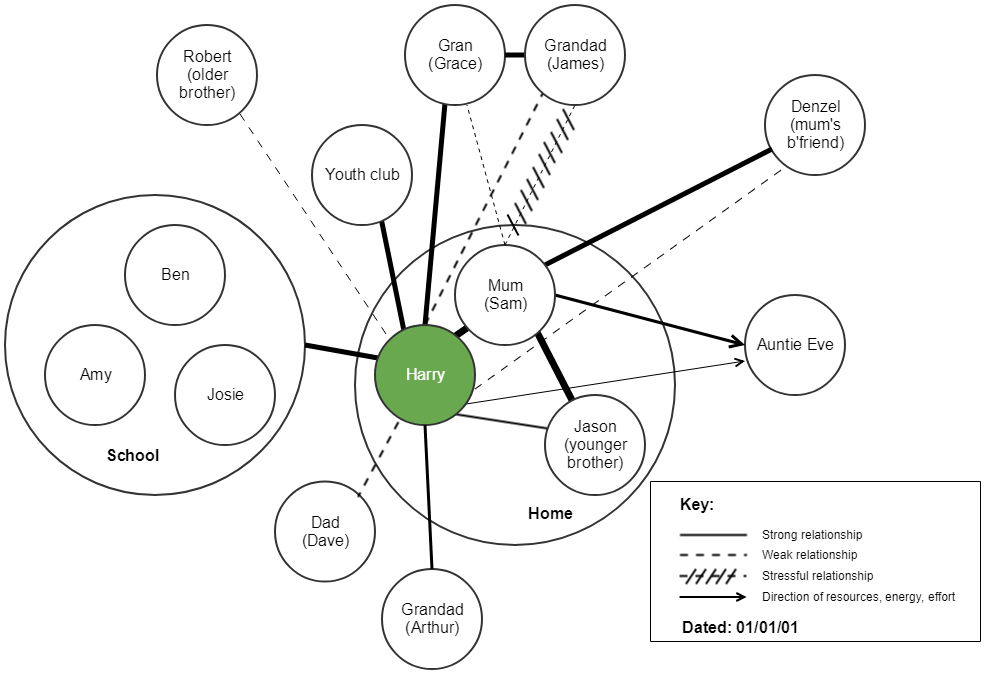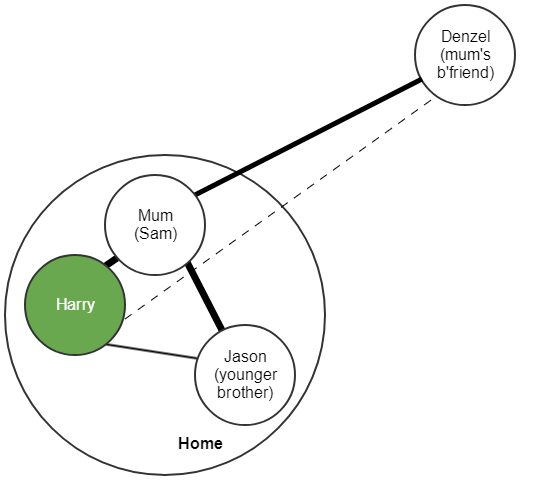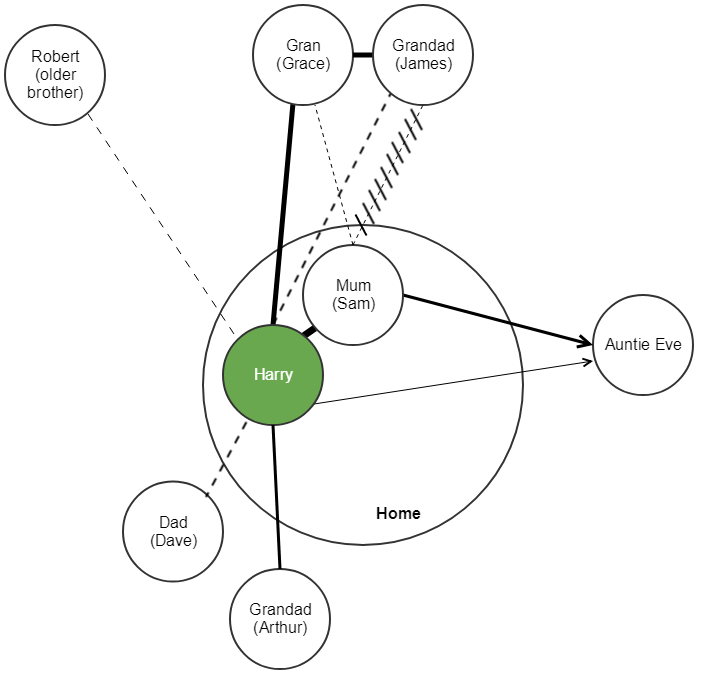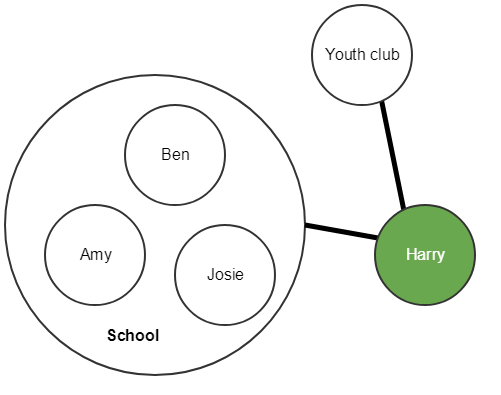Ecomaps
Ecomaps are a simple tool that allow us to establish who a child or young person sees as being important to them and in their support network.
Unlike genograms, ecomaps are a very important tool that show us who a child or young person sees as important to them, who their close relationships are with and how they view the adults around them.
Ecomaps can be used in conjunction with other information that we know about a child or young person to build a picture of the context in which they live, and what their daily experiences are like. We will explain how to build an ecomap with a young person, using common symbols and terminology.
What is an ecomap?
Unlike genograms, which are very structured and show the make-up of a young person's family, ecomaps are a visual means for a young person to show who is in their network (be that family, friends, neighbours, school staff) and what sort of relationships they have with them. Developing an ecomap with a child or young person can identify the context in which they live, who they feel aligned to, or if they are isolated in certain areas.
Example ecomap
Harry, represented by the green circle in the middle of the image, attends your setting. Through working with him you have developed the following ecomap.
Note: This image is computer generated to allow ease of reading across devices - ecomaps are often best done when hand drawn by the individual concerned.

Initially, it may look confusing, but let’s break it down and look at what the individual parts of the ecomap are telling us.
Breaking down the ecomap
There is a lot of information that can be stored for quick access using an ecomap. Expand each of the accordion sections below to find out more about the different parts of the ecomap.
 From this, we can see that Harry lives at home with his mum and younger brother (shown by the large circle surrounding the three of them). Within this, we can see that Harry feels that he has a very strong relationship with his mother, but not as strong a relationship with his younger brother (this being shown by the differing thickness of the solid lines). Harry perceives that his mother has as strong a relationship with him as with Jason, and also a strong relationship with her boyfriend, Denzel. Of note, however, is that Harry clearly feels that he does not get on with Denzel (shown by the dashed line suggesting a weak relationship).
From this, we can see that Harry lives at home with his mum and younger brother (shown by the large circle surrounding the three of them). Within this, we can see that Harry feels that he has a very strong relationship with his mother, but not as strong a relationship with his younger brother (this being shown by the differing thickness of the solid lines). Harry perceives that his mother has as strong a relationship with him as with Jason, and also a strong relationship with her boyfriend, Denzel. Of note, however, is that Harry clearly feels that he does not get on with Denzel (shown by the dashed line suggesting a weak relationship).
The distance that the circles are away from Harry show us that he sees himself having a very close relationship with his mother and a fairly close relationship with Jason (although this may be different if they were not living in the same house). Harry does not see himself as being at all close to Denzel, and we can suppose that he does not see Denzel as a form of support.
 Things become slightly more complex when we look at the extended family relationships. We can see that there are weak relationships between Harry and his dad (Dave), as well as Harry and his older brother, Robert.
Things become slightly more complex when we look at the extended family relationships. We can see that there are weak relationships between Harry and his dad (Dave), as well as Harry and his older brother, Robert.
Harry feels he has a strong relationship with his gran, although the ecomap suggests that he does not see himself as being close to gran. The relationship with his grandad, James, is much weaker, and Harry sees himself having a stronger relationship with his paternal grandad, Arthur. In Harry's perception, his mum does not have a strong relationship with her mother (Grace) and step-father (James), with the relationship with James being stressful.
Finally, there is the relationship with mum's sister, Eve. Harry sees a relationship there, but it's not as strong as other relationships. The arrows indicate that Harry feels that both he and his mum invest a lot of energy in maintaining the relationship, but this is not reciprocated by Eve.
 Harry considers himself to have good relationships with the three children identified within the school (Ben, Amy and Josie). He also sees youth club as a good form of relationships and support, although there is no information as to who specifically this relates to.
Harry considers himself to have good relationships with the three children identified within the school (Ben, Amy and Josie). He also sees youth club as a good form of relationships and support, although there is no information as to who specifically this relates to.
Tips for creating an ecomap
There are few hard and fast rules that relate to an ecomap:
Always use a large sheet of paper and ensure that the child or young person is in the centre of the paper. The exercise often works well when cut out shapes are used. These can be moved around as required before the final version is stuck down.
The strength of relationships can be illustrated however the young person feels they want to do it. It's important there is a key so that the ecomap can be understood. The key used in the example above is the generally accepted common standard.
The distance between the different people is important because this shows how close the child or young person feels to someone.
Date the ecomap - things change and it's useful to see when ecomaps were created and this evidences how things have changed.
Quick Reference
We have developed a single-page document that provides a quick reference guide to ecomaps - download it here.
